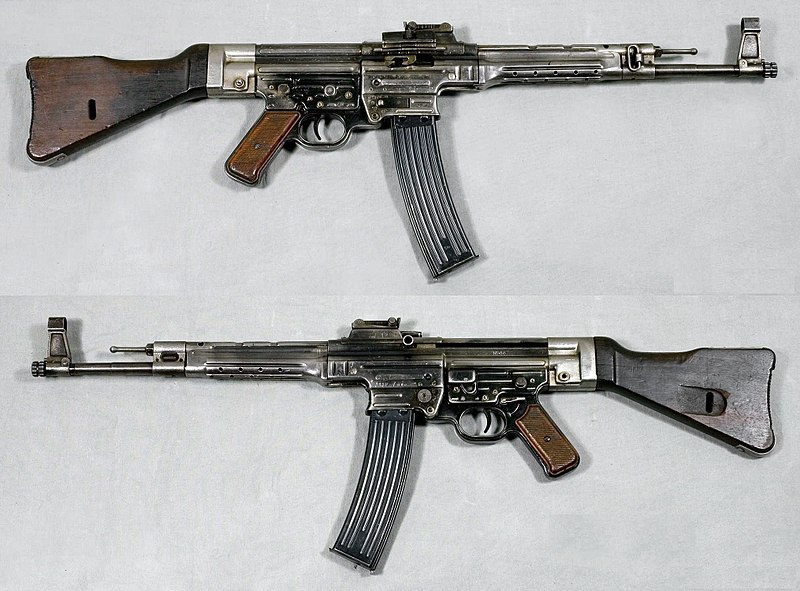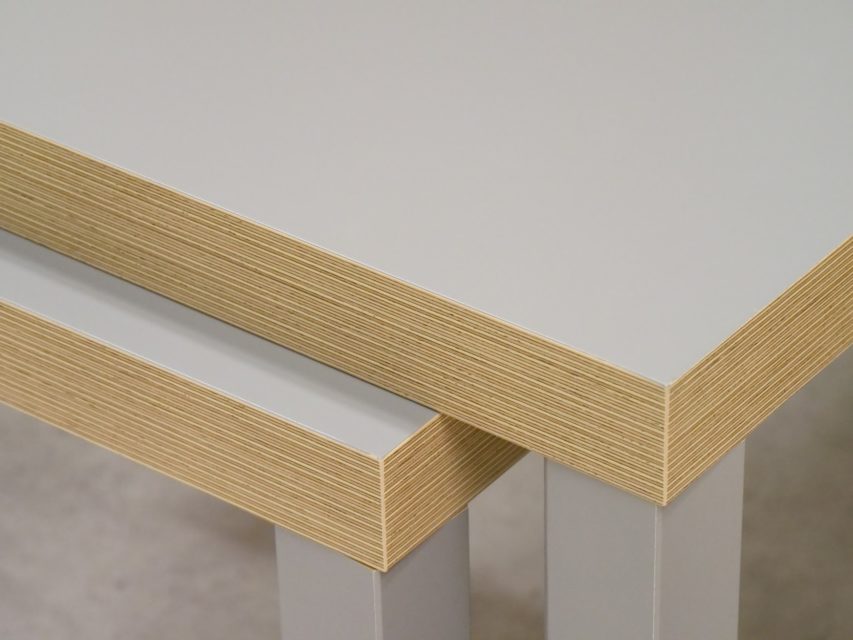Lindybeige
Published on 16 May 2009In which I ramble for a bit making a series of near-random points about chainmail, or mail, or whatever you prefer to call it.
There is much on mail on my website. Please check there first before writing to me asking questions on this topic.
November 6, 2017
Chainmail – some points about
November 4, 2017
QotD: The ultimate Steve Jobs device
The iPad is the ultimate Steve Jobs device – so hypnotic that not only do people buy one without knowing what it’s good for, they keep feeling like they ought to use it even when they have better alternatives for everything it does. It’s a triumph of style over substance, cool over utility, form over actual function. The viral YouTube videos of cats and two-years-olds playing with it speak truth in their unsurpassable combination of draw-you-in cuteness with utter pointlessness. It’s the perfect lust object of postmodern consumerism, irresistibly attractive but empty – you know you’ve been played by the marketing and design but you don’t care because your complicity in the game is part of the point.
This has to be Steve Jobs’s last hurrah. I predict this not because he is aging and deathly ill, but because he can’t possibly top this. It is the ne plus ultra of where he has been going ever since the Mac in 1984, with his ever-more obsessive focus on the signifiers of product-design attractiveness. And it’s going to make Apple a huge crapload of money, no question.
[…]
Fast-forward this a couple years and I can see Apple in hell, committed to sexy overpriced products that nobody actually needs, undercut by Android from all directions, and subsisting on a decaying aura of pop-cultural cool. Because that’s what tends to happen when you put yourself in the fashion business and you’re past your peak; those who live by hipness get to die by it too.
Eric S. Raymond, “Apple, postmodern consumerism and the iPad”, Armed and Dangerous, 2010-04-22.
October 30, 2017
Tank Chats #19 Matilda II
Tank Museum
Published on 28 Apr 2016The name Matilda means Strength in Battle from the Germanic roots Maht, meaning strong and Hild meaning battle.
The Matilda was regarded as a superb tank in its day and carved a remarkable career for itself. A few served in France in 1940 but in the early stages of the North African campaign, under General Wavell, it virtually ruled the desert. Even when the Afrika Korps arrived it remained a formidable opponent, immune to everything but the notorious 88mm gun. Its main failings were its slow speed and small gun, which could not be improved.
October 26, 2017
How A Man Shall Be Armed: 15th Century
Royal Armouries
Published on 20 Feb 2017The 15th Century was the highpoint of the armourers craft, with knights across Europe taking to the field of battle in elaborate and almost impregnable suits of plate armour. Discover how a knight of the 15th Century would arm themselves for combat.
October 22, 2017
IKEA’s strengths and weaknesses, from a consumer point of view
Paul Sellers posted an article on his woodworking blog, reacting to some British journalists praising IKEA’s “democratisation of design”:
Visually neat and relatively cheap at first glance, but they are basic and they resolve the need in a new and young family for storage. The pinnacle of three-dimensional cubism!
(photo from PaulSellers.com)Yup! a couple of newspaper writers (maybe more, knowing British journalism) reported the same thing in a short space of time, both hailing IKEA as a ‘democratising’ force revolutionising people’s perspectives on furniture design. Both articles were interesting in the way some articles can be, you know, not contributing much to society really, but time filling on a lazy Sunday. What actually struck me most between their somewhat opposing points of views was the unifying thread in their use of the terms “democratisation of design” and “democratising design and the theme of creating affordable, non-fusty furniture for the masses.” As far as I have seen through the years it is not so much IKEA’s ability to design but more their ability to produce zero- or minimalist-design products that seem less to be concepts of style, shape or form but mostly the selling of square-edged, styleless, plank-type items in the form of very, very plain boxes. Yes, I do understand the needs of young families for low cost storage and first year students to furnish their rooms, but democratisers of design!
Unpretentious though their lines are, you can hardly say they are designs so much as meagre assemblies and of course assemblies you generally have to take care in the way they are used because the selling points are their lightweight cheapness, transportability, dismantle-ability and simple (or complex) self-assembly products. You might be better to strike out into similar fashion statements rejecting the classics of old and adopt an equally classless line of unimagination by using old scaffold planks for dining tables and benches or, say, a shipping pallet coffee table on commercial galvanised swivel casters.
Elizabeth and I used to enjoy visiting a furniture store up in Peterborough, but about a year or so back, they stopped carrying the kind of furniture we liked and started stocking exactly the sort of stuff Paul is talking about. Industrial chic is all very well, but these pieces looked like they’d been thrown together at the last possible second as a student project for a college design course: the industrial fittings were cobbled together as crudely and as shoddily as possible, with no eye to either aesthetics or sturdiness. They were literally props that might appear in the background of a Victorian or Edwardian shop floor scene in an off-, off-, off-Broadway kind of production.
I’m far from a curmudgeon on the topic of home decor and furniture, but the pieces in that store were expensive crap. You can do the industrial chic look, or more modern variations using cast-offs from all sorts of places. My friend Brendan, in his first couple of apartments, had no spare cash at all so he scrounged up pretty much all of his furniture from around town. He had the weirdest collection of decades-old store signs, former display cabinets from different eras, and I don’t know what else, but he has a great eye for design, so no matter how eclectic it all was, he managed to make it look appealing and (somehow) integrated. That was clearly the ideal for the owners of the Peterborough furniture store, but they missed the mark by a very large amount.
I never liked lazy, press-release type journalism (as we are used to in British woodworking magazines) because it can be the same as lazy design work; both lacking any true imagination. But the two authors, each celebrating IKEA’s birth for opposite and then too the same reasons, seemed more focussed on this issue of IKEA somehow ‘democratising’ something rather than considering what could be in essence more a diktat. I question whether IKEA makes products that people actually want or makes people want what they make by virtue of cheapness and driving out competition, but then what do I know? I know this though, IKEA only sells what it wants you to buy, sells stuff so cheap that no one else can compete, and devalues the market by forcing down prices to a level that promotes mainly quite dumbed down designs. I don’t ever recall much in IKEA’s selling centres that I would describe as at all imaginative. People buy there because it’s cheap. To zone in on the reporting world, on Beeb 4 a day later a reporter interviewed some head of IKEA UK and allowed way too much waffling claptrap boasting IKEA’s products were now no longer going into the landfill after a short lifespan as the reporter suggested, which is of course absolutely true, but onto the secondhand market, which IKEA wants to include in its ‘widening circle of circulation’.
[…]
On the one hand Rhiannon Cosslett article in the Guardian describes IKEA accurately as the “symbol of impermanence”, but she also follows the same track as India Knight in stating that this IKEA is enabling people to shed their ties with “snobbery regarding middle-class home decoration”. The woman reporting in the Times, India Knight, describes the pretension of owning a semi (duplex, USA) and adding furniture that emulates the chintz (a word used in the two articles) of the rich and famed owners living in UK mansions past as a kind of mindless hypocrisy. I agree to some degree, but then there are those millions of others who follow the IKEA trending in equally mindless ways buying into its philosophies purely on the basis that it’s IKEA, as though IKEA holds the keys to concepts of good design. This, in my mind at least, shows how lacking we can become in discerning just what a good design is. I might liken IKEA designs to all the nations County Councils use of standardised street and buildings signage. Yes, they work effectively, but only because they have a created dull and unimaginative examples that stand out because of dullness. The main difference here of course is that for safety reasons the County Councils have a get out clause. I have yet to walk through an IKEA store without thinking (smelling too) MDF, pressed fibreboard, resins and plastic but how is it even possible that any company could put so much effort into creating so much artificiality.
October 12, 2017
How to Make Small Dovetail Boxes | Episode 1 | Paul Sellers
Paul Sellers
Published on 2 Oct 2017In this first episode of one of our first Woodworking Masterclasses series, Paul shows how to prepare the wood and cut the tails for the dovetails. These steps will be repeated for other boxes in this series. It will show how the basics can be adapted to more complex projects.
For more information on these topics, see https://paulsellers.com or https://woodworkingmasterclasses.com
October 10, 2017
Evolution Of British Battle Tanks In WW1 I THE GREAT WAR Special
The Great War
Published on 9 Oct 2017Support the Tank Museum: https://www.patreon.com/tankmuseum
Tank Museum on YouTube: https://www.youtube.com/TheTankMuseumIndy talks to Tank Museum curator David Willey about the evolution of the British Tank during World War 1. From the early beginnings with prototypes like Little Willie and the first deployed Mark I to later versions like the famous Mark IV, the Mark V and lesser known tanks like the Mark IX, Mark V** or Mark VIII “Liberty Tank”.
September 28, 2017
More than you want to know about the Panzer III
Lindybeige
Published on 8 Jun 2017Panzer IIIs were common German tanks in WW2, and here I talk about them, and make a few general points.
Another video (there will be more) from ‘The Tank Museum’ at Bovington. Why they changed the name is beyond me. I’d like to meet the branding guru who came up with that idea and administer several hard slaps. It’s like changing ‘Wimbledon’ to ‘The Tennis Competition’.
Anyway, here, in its particular shade of beige, is the tank (with a brief shot of one of its cousins), and I ramble on about various bits of it. It’s all right for you – you just have to watch it once, but I had to edit this, which involves seeing each bit several times, and wading through all the footage of me droning on and on.
I use the word ‘burn’ to describe a H.E.A.T. round’s penetrating a tank, and as several people have pointed out, this is not technically the correct word. They are right, although the word is often used in this context, and the temperatures involved are very high, but yes, I admit it: I should not have used the word ‘burn’.
Yes, I am aware that the links on the end plate come in late. This is because YouTube has changed the system, which used to be flexible, to one that relies on limited templates. It doesn’t enable the user to put picture links in except in the last twenty seconds of a video, and so because I added a little shot at the end, the links all start late. Possibly the new system is supposed to be more idiot-resistant than the old one. Unfortunately, this makes it an obstacle for the intelligent.
Here’s a link to the tank museum’s site: http://www.tankmuseum.org/home
September 24, 2017
Brilliant job on the Kalashnikov statue, Tovarisch, but what’s that weapon right there?
The Guardian reports on some emergency fix-ups required to a brand new statue honouring Mikhail Kalashnikov:
Workers have removed part of a new monument to Mikhail Kalashnikov, the inventor of the Soviet Union’s AK-47 assault rifle, after eagle-eyed Russians noticed that it mistakenly depicted a German second world war weapon.
The monument to the creator of one of Russia’s best known export brands was unveiled in central Moscow three days ago to much fanfare.
A metal bas-relief behind a statue of Kalashnikov depicts the AK-47 and other weapons all supposedly designed by the engineer, who died in 2013.
But embarrassed sculptor Salavat Shcherbakov had to admit that among them was the Sturmgewehr 44 (StG 44) assault rifle used by Nazi troops.
“We will rectify this,” Shcherbakov said in comments broadcast by state-run Rossiya 24 channel. “It looks like this [mistake] sneaked in from the internet.”
By Friday evening a square hole gaped where the German rifle had been depicted in the bas-relief.
Kalashnikov’s weapon, created in 1947, does have a striking resemblance to German arms designer Hugo Schmeisser’s StG 44 rifle, created in 1942, although they have major design differences.

MP44 (Sturmgewehr 44), Germany. Caliber 8x33mm Kurz- From the collections of Armémuseum (Swedish Army Museum), Stockholm. (via Wikimedia)
GE Steam Turbine Locomotives – 1938 Educational Documentary – WDTVLIVE42
Published on 30 May 2017
The General Electric steam turbine locomotives were two steam turbine locomotives built by General Electric (GE) for Union Pacific (UP) in 1938. This newsreel style promotional film shows construction of the locomotives while highlighting their expected capabilities.
September 8, 2017
Book Review: The Schmeisser Myth by Martin Helebrant
Published on 17 Feb 2017
The Schmeisser Myth: German Submachine Guns Through Two World Wars is a newly published history of SMG development from the Villar Perosa and MP18 through the MP38 and MP40, written by Martin Helebrant. Given that it is published by Collector Grade, it should be no surprise that it is an excellent volume, which includes both historical and developmental context as well as detailed collectors’ information on markings, variations, and production numbers.
September 5, 2017
Tank Chats #18 Mark I
Published on 15 Apr 2016
David Fletcher has returned to host the latest Tank Chat, on the Mark I tank.
The Museum’s Mark I is the only surviving example of this, the first tank produced to go into battle.
Find out more about the First World War on the Tank Museum’s Centenary blog, Tank 100 http://www.tank100.com
September 3, 2017
Medieval Castles – Elements of Fortifications
Published on 17 Jan 2017
This episode covers the various elements of castle fortification elements like towers, walls, moats, loopholes, gates, gatehouses, portcullises, battlements, hoardings, draw bridges, etc.
Military History Visualized provides a series of short narrative and visual presentations like documentaries based on academic literature or sometimes primary sources. Videos are intended as introduction to military history, but also contain a lot of details for history buffs. Since the aim is to keep the episodes short and comprehensive some details are often cut.
» SOURCES & LINKS «
Kaufmann, J.E; Kaufmann, H.W.: The Medieval Fortress – Castles, Forts, and Walled Cities of the Middle Ages.
Piper, Otto: Burgenkunde. Bauwesen und Geschichte der Burgen.
Toy, Sidney: Castles – Their Construction and History
August 31, 2017
The Dieppe raid and the failure of the Churchill tank
Published on 15 Oct 2010
The Dieppe Raid, also known as the Battle of Dieppe, Operation Rutter and, later, Operation Jubilee, was a Second World War Allied attack on the German-occupied port of Dieppe. The raid took place on the northern coast of France on 19 August 1942. The assault began at 5:00 a.m. and by 10:50 a.m. the Allied commanders were forced to call a retreat. Over 6,000 infantrymen, predominantly Canadian, were supported by a Canadian Armoured regiment and a strong force of Royal Navy and smaller Royal Air Force landing contingents. It involved 5,000 Canadians, 1,000 British troops, and 50 United States Rangers.
Objectives included seizing and holding a major port for a short period, both to prove that it was possible and to gather intelligence. Upon retreat, the Allies also wanted to destroy coastal defences, port structures and all strategic buildings. The raid had the added objectives of boosting morale and demonstrating the firm commitment of the United Kingdom to open a western front in Europe.
Virtually none of these objectives were met.
August 29, 2017
Tank Chats #17 Tiger I
Published on 1 Apr 2016
David Willey, The Tank Museum Curator and co-author of the Tiger Tank Owner’s Workshop Manual, presents this Tank Chat on the subject of the most famous tank in the Bovington collection – and perhaps the world – the German Tiger 1 from the Second World War, also known as Tiger 131.






